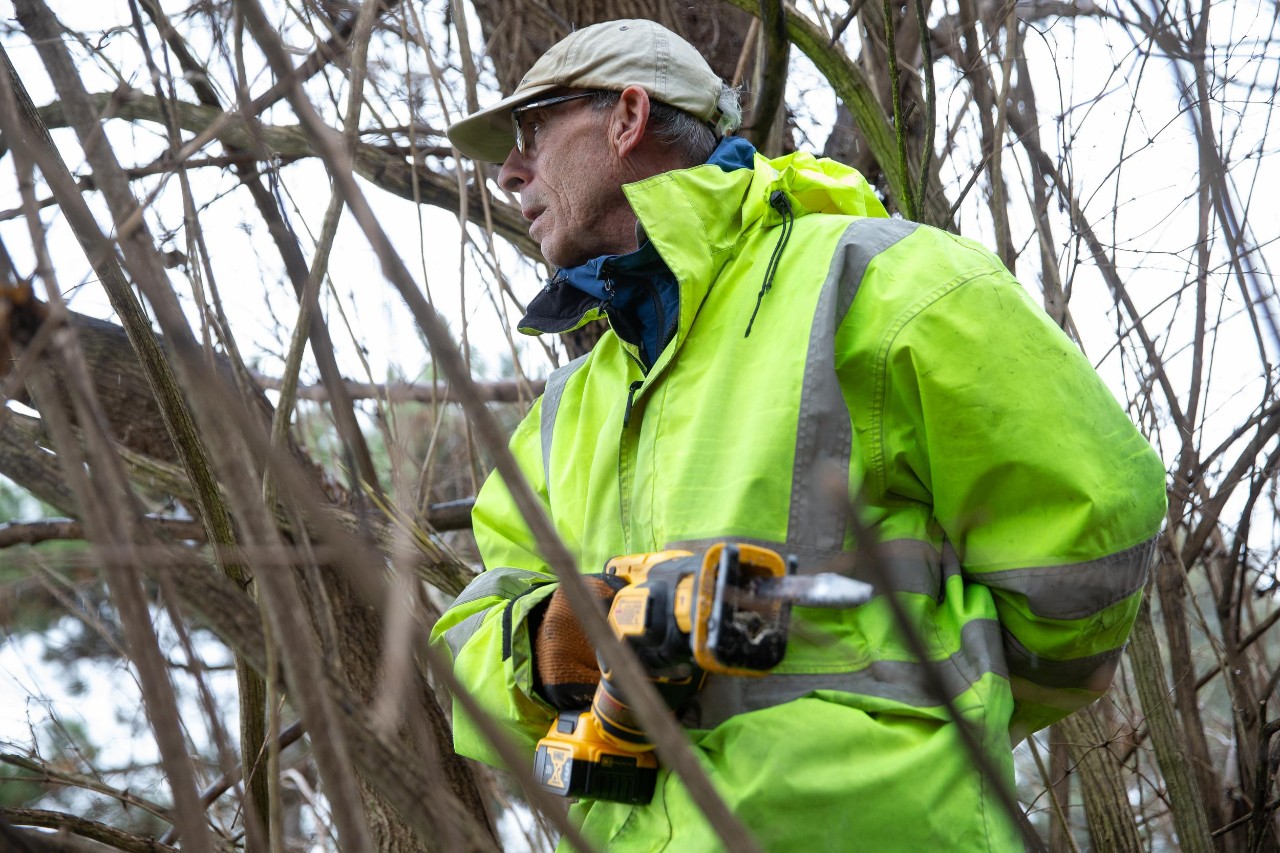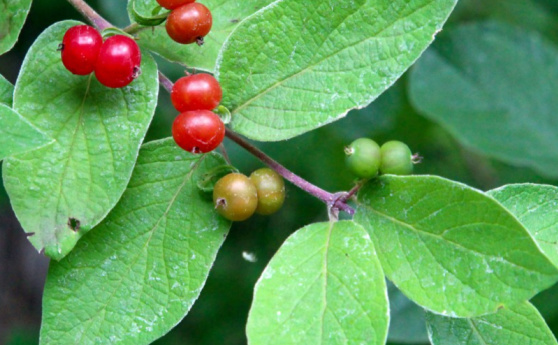Amur honeysuckle is a common backyard pest in the eastern United States, where it crowds out most other plants.
University of Cincinnati botanist Denis Conover has been working to eradicate this invasive Asian shrub in parks and forests across Cincinnati. The bush’s thick roots grow deep and wide, making removal of an entire mature plant difficult. Foresters typically chainsaw the thick trunks of the bushes and apply toxic herbicide to the exposed surface.
But Conover has been experimenting with greener alternatives. He has tried wrapping the trunk with different materials to block sunlight from the plant promoting new shoots. Now he is sharing his techniques with the public to help them safely remove the bushes from their own properties.

UC College of Arts and Sciences botanist Denis Conover uses a reciprocating saw to cut through the trunks of invasive Amur honeysuckle. Photo/Andrew Higley/UC Marketing + Brand
Conover appreciates how thoroughly honeysuckle has taken over many forests. “It was introduced to North America more than 100 years ago as an ornamental but escaped cultivation,” he said. “It got into natural areas where it can totally take over.”
Nonnative plants have a history of escaping cultivation in the U.S. to create unexpected problems, Conover said. He points to introduced plant diseases such as chestnut blight and Dutch elm disease and insect pests such as hemlock woolly adelgid, which have devastated American forests. Honeysuckle grows quickly, buds earlier and holds its leaves longer in the fall than other plants, shading out everything beneath it.
Eventually, you could have an entire monoculture of Amur honeysuckle where once there was a complex ecosystem of native deciduous forest.
Denis Conover, UC College of Arts and Sciences
Honeysuckle produces copious red berries that birds spread far and wide.
“Not very many caterpillars eat honeysuckle leaves. It’s a big pest. It can become so dense that not even tree seedlings can regenerate underneath it,” he said.
“So you might have some native trees poking up above the canopy. But once those trees die, that’s it. They’re not regenerating. Eventually, you could have an entire monoculture of Amur honeysuckle where once there was a complex ecosystem of native deciduous forest.”
In 1985, Conover and Donald Geiger, PhD, his mentor in the fields of plant physiology and ecological restoration, began removing Amur honeysuckle by applying herbicide to the cut stumps to prevent them from resprouting.
Tips to remove honeysuckle
- Cut the bush and any branch shoots low to the ground.
- Cover the stump and any exposed branch ends with garden plastic. Black garbage bags also work. Tie the plastic to the stump or secure it to the ground with garden wires.
- Plant native trees or bushes around the dead stump to discourage honeysuckle from returning.
Thank you to writer Michael Miller and University of Cincinnati for this helpful and informative article. Continue to the UC News site to finish reading this story.


